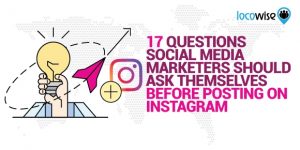I have had some interesting experiences when I have gone to meet certain clients about what they want to put up on their website. You get a whole host of ideas with variations of schemes. This image should go there, this text should be of this size, a list here and onward it goes. And do not get me wrong, these are all wonderful ideas, your website is supposed to be the most accessible presentation people can have about your business so you might as well do your utmost to impress them.
The blog for many people still steps in as an afterthought, which is very surprising by my experience. I mean the rest of the website is where you give your visitors an insight as to what it is that you do, a basic look, in fact. Your blog on the other hand is your piece to show off your expertise to your entire audience. Your understanding of your market, your clients, how your work impacts various other fields, the tools you use, the tools that are the chosen standards and again the list is endless. How does that help? Well, you do not just want to tell the visitors what you just do but also make them understand that you have a thorough awareness and knowledge of the domain you’re working in. Similarly your existing clients can have multiple questions about your take on certain subjects and again your blog can be a gateway for them to have those answers. The fact that they get those answers from you just ensures that they not only stay as your clients but also build your business image further. So when you do begin your blog there are some tips that can help you create a blog.
- Understand your audienceWhen you begin to write a business blog from a particular business viewpoint it is important to first of all know who are going to be your readers and understand their way of thinking. A blog post that matches what your audience might be looking for to read or have answered will be a post that will resonate with them better.This is easily doable with the social media at your disposal. Simply place a tweet asking a certain question and see if it gets an appropriate response from your followers. Depending upon the response you get, you have your next blog post title ready.
- Research is keyif you know the title of your blog post then you already know the fields and confines of your content. Remember you write a blog to show off your expertise in the field and your research should be a reflection of that.Spend enough time researching the topic you have selected. Go through multiple sites, even the ones of your competitors and see what are writing on the subject that you have planned. Take a general perspective of what the market is saying about the topic and then open your word processor to start writing.
- Pour yourself in your postNo this does not translate to artistic flow. This is about giving a perspective to your clients, visitors and like-minded people in the industry. By perspective, we mean offering your own view on the topics in discussion. So when you write about why WordPress is the preferred tool for website development, you add in your own view as to how those features of WordPress or conversion from WordPress to PSD do or do not make it the best. Elucidate on why WordPress Conversion is popular and give your view as to what extent you recommend it. Blogging is a human interaction on the computer and this personalized opinion engages the reader more which is only good for you at the end of the day.
- Call to action: it worksSo even if you are releasing blog posts very regularly it does not automatically mean that you are guaranteed visibility or success in what you do. You want to build your audience on social media so that you gain more readers and that will be there when you tell them to.Just add the link to your twitter beneath your post and ask them to follow you if they enjoyed reading the post. It is simple but powerful and effective.
- Headlines: Titles: Draw your audienceYour content is A plus, it adds great value to the knowledge bank of the reader and offers great insight on the subject you have chosen. And yet that post of yours is not getting the reader traffic that you envisaged. After all this was your A material right? Revisit what you have written and look at your article title and heading. Is it something that your specialized reader would understand? Is it something that your average reader would resonate with?Both of those questions need to be answered as “yes” and if they are not then re write the titles. Experiment with them, tweak them and make them into something which the average reader would be automatically drawn to.
- ConsistencyYou have to be willing to go the distance with your work on your blog. It does not do to simply market one or two posts that you have worked on. Have an uploading frequency and post articles within that frequency. Your readers will not increase astronomically within the first few months as you do this but as your content builds up, the visitors and readers will increase.Consistency also counts for a lot because it is a telling sign about the dedication you have. So if your last post is five months old, it just gives off the wrong impression to your reader and even if he is impressed with the subject matter the idea that you are lax about posting more will put him off a little.
- Keep it conciseYes! Elaborate posts and explanation are well received by readers and generally appreciated by the informed readers but remember over lengthening the post can have undesirable results on your blog.That does not mean that the content should be short but should be long enough to cover the subject’s essentials but without going into the unnecessary details. Optimal length earns positive response.
Here are the few tips that helped me startup with my own blog as well as helping my client to step in the blogging world! If I have missed something important please comment in the comment box below.
Digital & Social Articles on Business 2 Community
(316)






